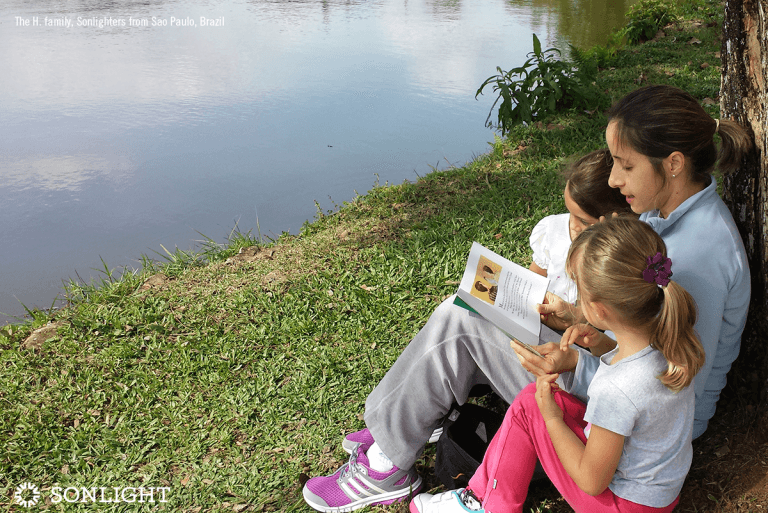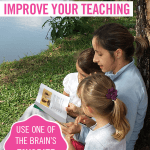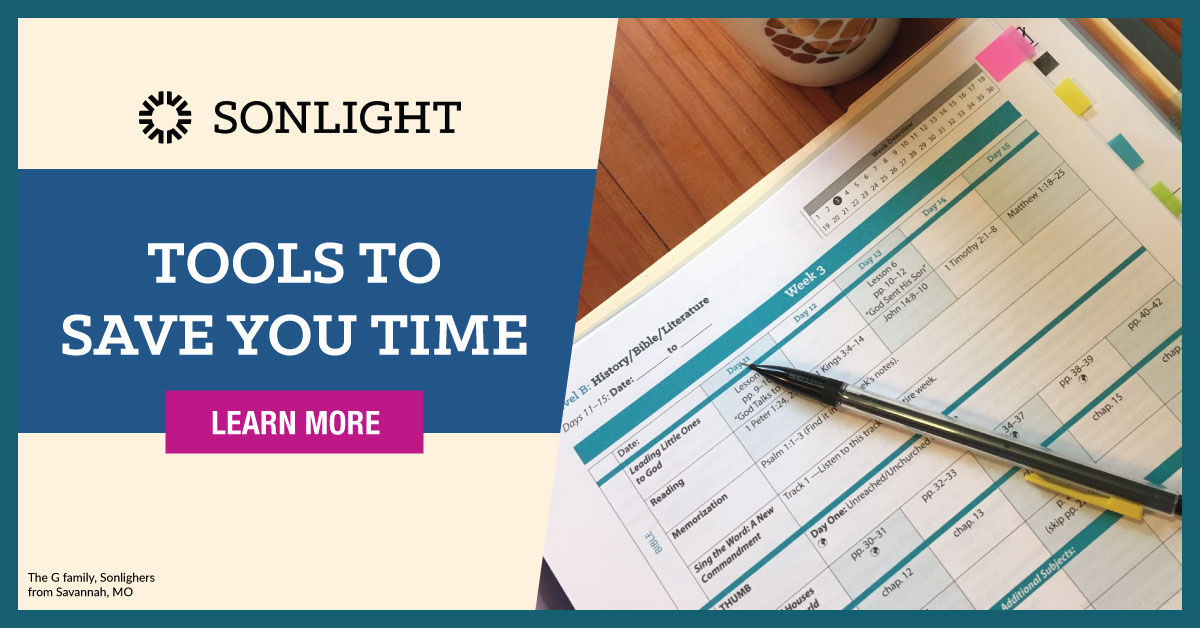
Want an easy, nearly foolproof technique to improve your teaching? It takes virtually no preparation, is absolutely free, requires no supplies, and works for any topic in your homeschool. You can use it on the couch, in the van, or in a waiting room. It works with little kids and teenagers alike.
This simple yet meaningful teaching tool is asking questions. And in the spirit of asking questions, this entire post is written in a Q & A format.
Q: What’s one of the brain’s favorite things?
A: Mysteries!
Give your brain a mystery to solve, and it is focused and ready to learn.
That's why those clickbait titles on Facebook draw you in so well and get you to click against your better judgement—"First she grabs a pencil, and then you won't believe what she does with it." Hmmm... what did she do with that pencil? Now I really want to know!
Q: What’s one simple practice you can incorporate today to help your children learn?
A: Ask a question before you read!
Like those clickbait article titles, use "thinkbait" questions to pique your children's curiosity about the reading at hand.
Q: Where can I find questions to ask?
A: Pull from your IG or make them up on the fly.
Your Sonlight Instructor’s Guide has questions for most assignments. Rather than read these at the end of the assignment, flip the order!
- Begin the assignment by asking the questions.
- Do the reading.
- Then talk through the answers to the original questions.
By asking questions first, your children get a heads-up about what they should listen for.
Or you can make up questions! If your child is reading Robert Fulton, Boy Craftsman (from History / Bible / Literature D) and comes to the chapter titled Discovery at Conestoga Creek, each of you can guess what you think the discovery will be. It is highly unlikely that any of you will guess what the discover actually is—black lead for a pencil—because that is a random discovery, and there would be no way to predict that from the previous text. But if you get answers like, “Gold!” or “A runaway slave!” or “A puppy!” you are all a little more invested in finding out who was right. (Or who was closest!)
Q: What about wrong answers?
A: In short, whether the answer is right or wrong is largely irrelevant (especially the questions at the start).
If you ask a question before you’ve done the reading, there should be zero expectation that you’ll get the right answer. You’re being questioned on something you haven’t learned yet! These questions are for predicting, guessing, estimating, being creative, and overall activating the brain.
As for the questions after you’ve done the reading, those both help the student solidify what they were learning and help you gauge what they have learned. Of course it’s lovely if your student is able to give the right answer to your questions. But if not, all is not lost. Your teaching method has not failed! Now you, the teacher, have valuable information about what your children don't understand.
- So you talk about it.
- You clarify their understanding.
- You re-read a confusing passage or discuss new vocabulary.
- You change what the students are allowed to fiddle with as you read.
- Or you summarize the reading and determine to ask questions more frequently to make sure your children are learning.
Q: So how can you begin?
A: Just start!
Before your next reading, ask a question, and then start to read.
Enjoy!
Sonlight integrates Q&A into each program. See for yourself—try three weeks of any Sonlight Instructor's Guide for free. Click here to get one for any level, preschool through twelfth grade.










One Comment